Kazakh Ablay Khan University of International Relations and


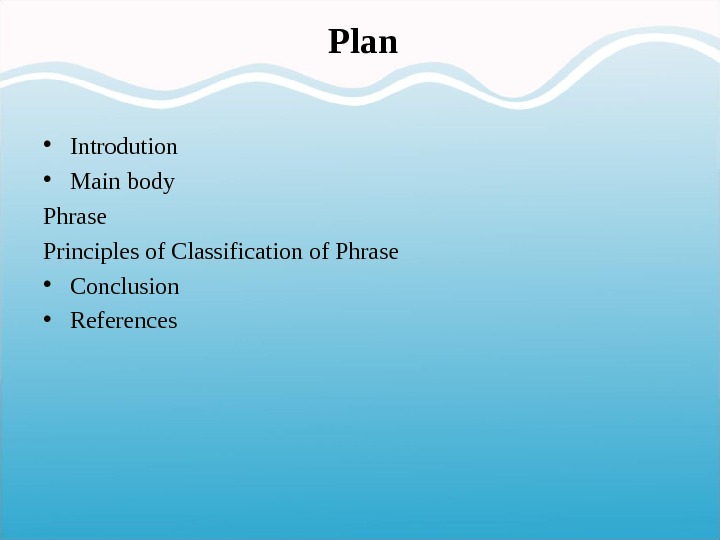
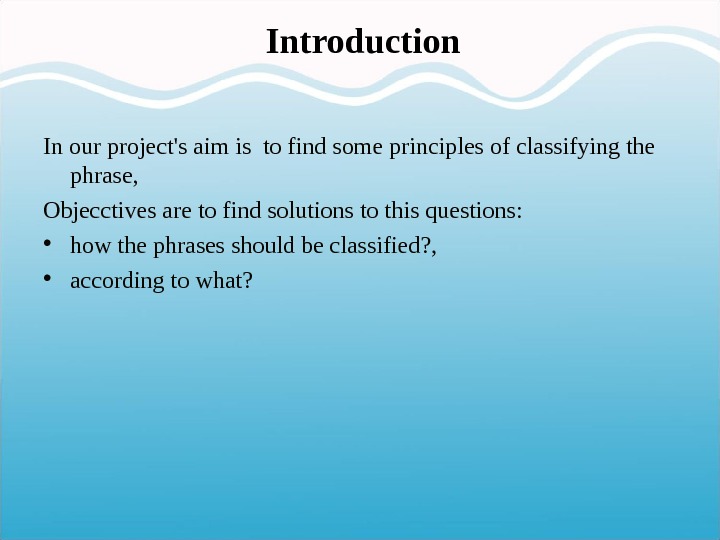

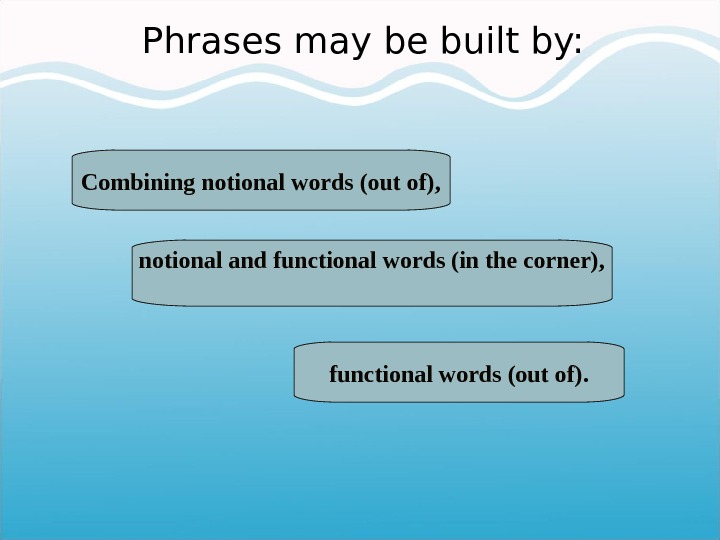
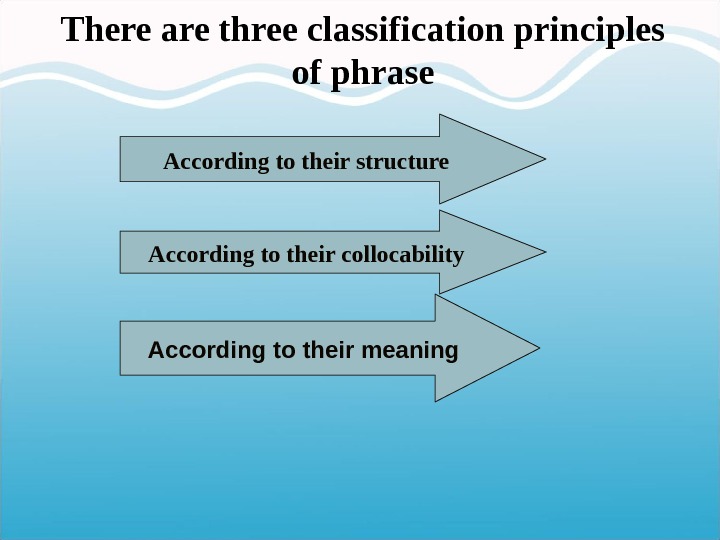
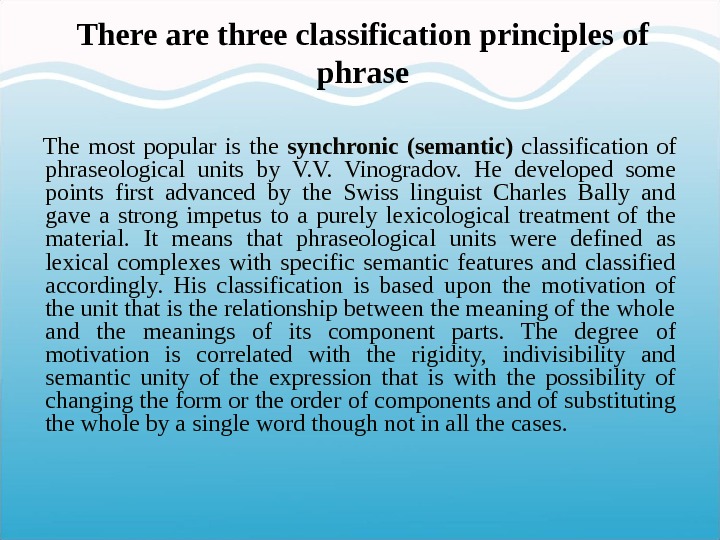

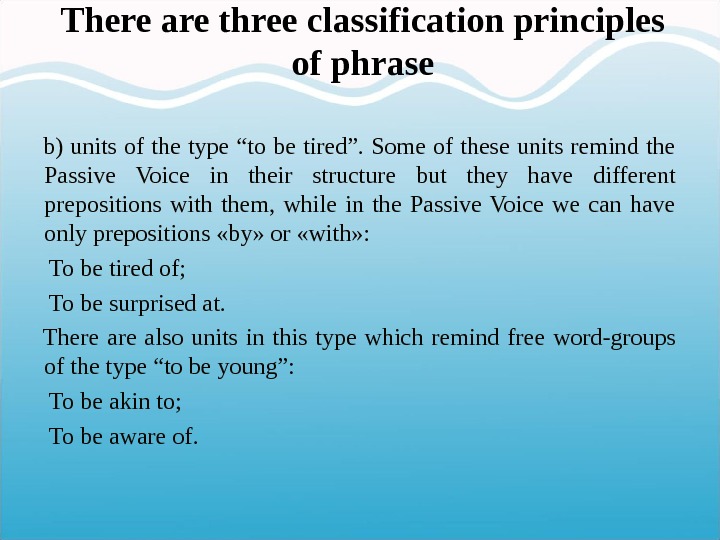
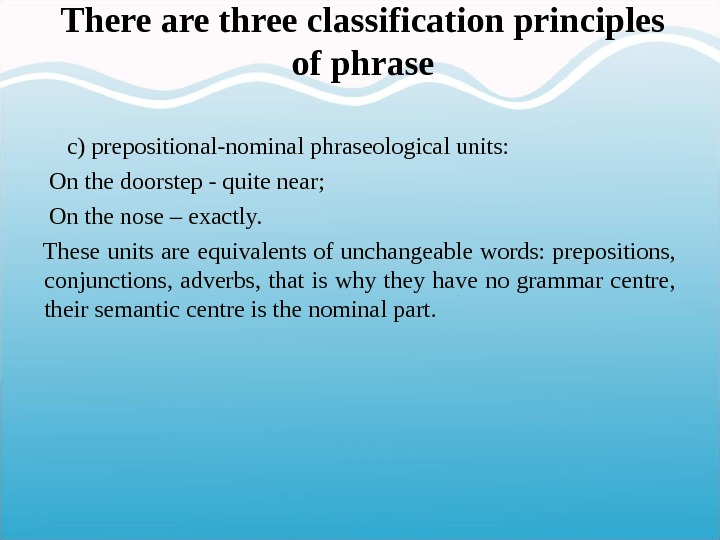

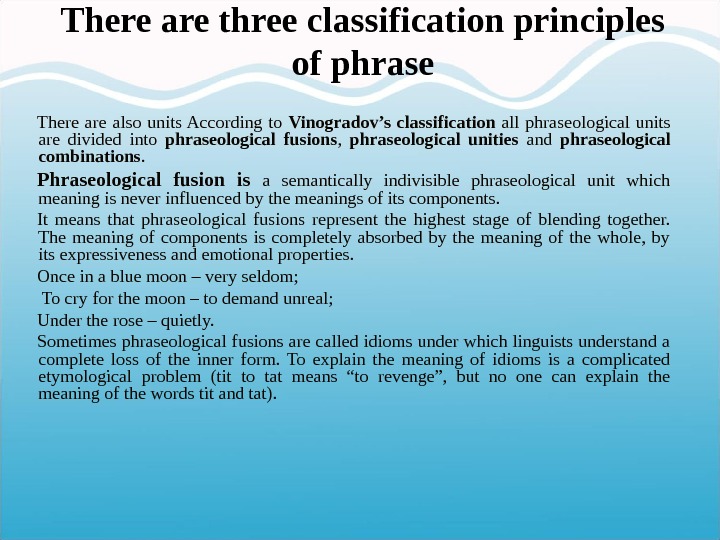


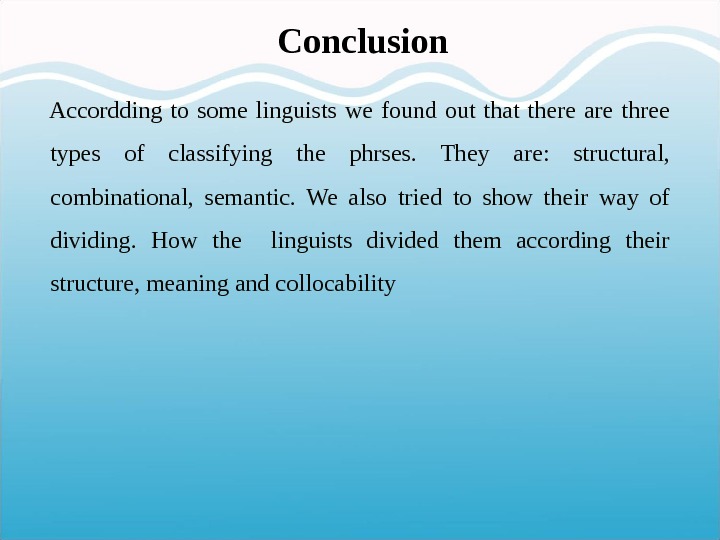
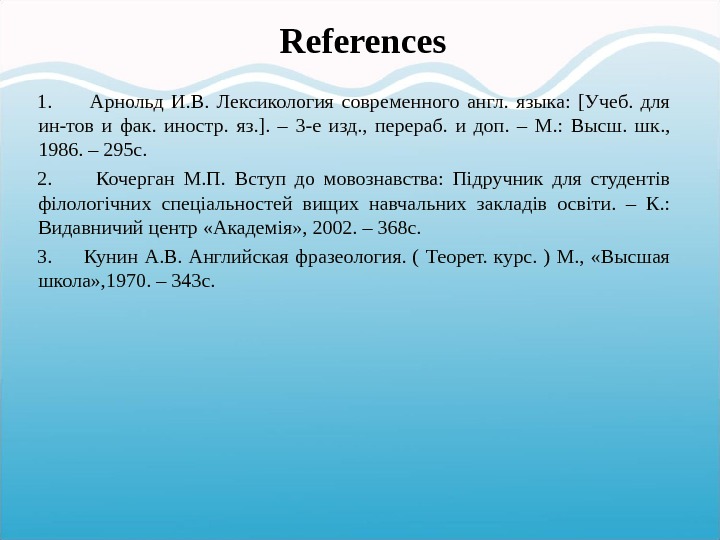
302_gr-teoria_phrase_classification.ppt
- Размер: 609.5 Кб
- Количество слайдов: 16
Описание презентации Kazakh Ablay Khan University of International Relations and по слайдам
 Kazakh Ablay Khan University of International Relations and World Languages Foreign languages: two foreign languages THEME: » Principles of classification of phrase» DONE BY: 302 gr-Koldas Zhansaya Shahan Botagoz Almaty, 2015 y
Kazakh Ablay Khan University of International Relations and World Languages Foreign languages: two foreign languages THEME: » Principles of classification of phrase» DONE BY: 302 gr-Koldas Zhansaya Shahan Botagoz Almaty, 2015 y
 Plan • Introdution • Main body Phrase Principles of Classification of Phrase • Conclusion • References
Plan • Introdution • Main body Phrase Principles of Classification of Phrase • Conclusion • References
 Introduction In our project’s aim is to find some principles of classifying the phrase, Objecctives are to find solutions to this questions: • how the phrases should be classified? , • according to what?
Introduction In our project’s aim is to find some principles of classifying the phrase, Objecctives are to find solutions to this questions: • how the phrases should be classified? , • according to what?
 Phrase • A narrower definition: a phrase is a unity of 2 or more notional words. A wider definition: phrase — any syntactic group of words.
Phrase • A narrower definition: a phrase is a unity of 2 or more notional words. A wider definition: phrase — any syntactic group of words.
 Phrases may be built by: notional and functional words (in the corner), functional words (out of). Combining notional words (out of),
Phrases may be built by: notional and functional words (in the corner), functional words (out of). Combining notional words (out of),
 There are three classification principles of phrase According to their collocability According to their structure According to their meaning
There are three classification principles of phrase According to their collocability According to their structure According to their meaning
 There are three classification principles of phrase The most popular is the synchronic (semantic) classification of phraseological units by V. V. Vinogradov. He developed some points first advanced by the Swiss linguist Charles Bally and gave a strong impetus to a purely lexicological treatment of the material. It means that phraseological units were defined as lexical complexes with specific semantic features and classified accordingly. His classification is based upon the motivation of the unit that is the relationship between the meaning of the whole and the meanings of its component parts. The degree of motivation is correlated with the rigidity, indivisibility and semantic unity of the expression that is with the possibility of changing the form or the order of components and of substituting the whole by a single word though not in all the cases.
There are three classification principles of phrase The most popular is the synchronic (semantic) classification of phraseological units by V. V. Vinogradov. He developed some points first advanced by the Swiss linguist Charles Bally and gave a strong impetus to a purely lexicological treatment of the material. It means that phraseological units were defined as lexical complexes with specific semantic features and classified accordingly. His classification is based upon the motivation of the unit that is the relationship between the meaning of the whole and the meanings of its component parts. The degree of motivation is correlated with the rigidity, indivisibility and semantic unity of the expression that is with the possibility of changing the form or the order of components and of substituting the whole by a single word though not in all the cases.
 There are three classification principles of phrase Prof. A. I. Smirnitsky worked out structural classification of phraseological units, comparing them with words. He points out one-top units which he compares with derived words because derived words have only one root morpheme. He also points out two-top units which he compares with compound words because in compound words we usually have two root morphemes. Among one-top units he points out three structural types: a) units of the type “to give up” (verb + postposition type); To back up – to support; To drop out – to miss, to omit.
There are three classification principles of phrase Prof. A. I. Smirnitsky worked out structural classification of phraseological units, comparing them with words. He points out one-top units which he compares with derived words because derived words have only one root morpheme. He also points out two-top units which he compares with compound words because in compound words we usually have two root morphemes. Among one-top units he points out three structural types: a) units of the type “to give up” (verb + postposition type); To back up – to support; To drop out – to miss, to omit.
 There are three classification principles of phrase b) units of the type “to be tired”. Some of these units remind the Passive Voice in their structure but they have different prepositions with them, while in the Passive Voice we can have only prepositions «by» or «with» : To be tired of; To be surprised at. There also units in this type which remind free word-groups of the type “to be young”: To be akin to; To be aware of.
There are three classification principles of phrase b) units of the type “to be tired”. Some of these units remind the Passive Voice in their structure but they have different prepositions with them, while in the Passive Voice we can have only prepositions «by» or «with» : To be tired of; To be surprised at. There also units in this type which remind free word-groups of the type “to be young”: To be akin to; To be aware of.
 There are three classification principles of phrase c) prepositional-nominal phraseological units: On the doorstep — quite near; On the nose – exactly. These units are equivalents of unchangeable words: prepositions, conjunctions, adverbs, that is why they have no grammar centre, their semantic centre is the nominal part.
There are three classification principles of phrase c) prepositional-nominal phraseological units: On the doorstep — quite near; On the nose – exactly. These units are equivalents of unchangeable words: prepositions, conjunctions, adverbs, that is why they have no grammar centre, their semantic centre is the nominal part.
 There are three classification principles of phrase b) units of the type “to be tired”. Some of these units remind the Passive Voice in their structure but they have different prepositions with them, while in the Passive Voice we can have only prepositions «by» or «with» : To be tired of; To be surprised at. There also units in this type which remind free word-groups of the type “to be young”: To be akin to; To be aware of.
There are three classification principles of phrase b) units of the type “to be tired”. Some of these units remind the Passive Voice in their structure but they have different prepositions with them, while in the Passive Voice we can have only prepositions «by» or «with» : To be tired of; To be surprised at. There also units in this type which remind free word-groups of the type “to be young”: To be akin to; To be aware of.
 There are three classification principles of phrase There also units According to Vinogradov’s classification all phraseological units are divided into phraseological fusions , phraseological unities and phraseological combinations. Phraseological fusion is a semantically indivisible phraseological unit which meaning is never influenced by the meanings of its components. It means that phraseological fusions represent the highest stage of blending together. The meaning of components is completely absorbed by the meaning of the whole, by its expressiveness and emotional properties. Once in a blue moon – very seldom; To cry for the moon – to demand unreal; Under the rose – quietly. Sometimes phraseological fusions are called idioms under which linguists understand a complete loss of the inner form. To explain the meaning of idioms is a complicated etymological problem (tit to tat means “to revenge”, but no one can explain the meaning of the words tit and tat).
There are three classification principles of phrase There also units According to Vinogradov’s classification all phraseological units are divided into phraseological fusions , phraseological unities and phraseological combinations. Phraseological fusion is a semantically indivisible phraseological unit which meaning is never influenced by the meanings of its components. It means that phraseological fusions represent the highest stage of blending together. The meaning of components is completely absorbed by the meaning of the whole, by its expressiveness and emotional properties. Once in a blue moon – very seldom; To cry for the moon – to demand unreal; Under the rose – quietly. Sometimes phraseological fusions are called idioms under which linguists understand a complete loss of the inner form. To explain the meaning of idioms is a complicated etymological problem (tit to tat means “to revenge”, but no one can explain the meaning of the words tit and tat).
 There are three classification principles of phrase Phraseological unity is a semantically indivisible phraseological unit the whole meaning of which is motivated by the meanings of its components. In general, phraseological unities are the phrases where the meaning of the whole unity is not the sum of the meanings of its components but is based upon them and may be understood from the components. The meaning of the significant word is not too remote from its ordinary meanings. This meaning is formed as a result of generalized figurative meaning of a free word-combination. It is the result of figurative metaphoric reconsideration of a word-combination. To come to one’s sense –to change one’s mind; To come home – to hit the mark; To fall into a rage – to get angry. Phraseological unities are characterized by the semantic duality. One can’t define for sure the semantic meaning of separately taken phraseological unities isolated from the context, because these word-combinations may be used as free in the direct meaning and as phraseological in the figurative meaning.
There are three classification principles of phrase Phraseological unity is a semantically indivisible phraseological unit the whole meaning of which is motivated by the meanings of its components. In general, phraseological unities are the phrases where the meaning of the whole unity is not the sum of the meanings of its components but is based upon them and may be understood from the components. The meaning of the significant word is not too remote from its ordinary meanings. This meaning is formed as a result of generalized figurative meaning of a free word-combination. It is the result of figurative metaphoric reconsideration of a word-combination. To come to one’s sense –to change one’s mind; To come home – to hit the mark; To fall into a rage – to get angry. Phraseological unities are characterized by the semantic duality. One can’t define for sure the semantic meaning of separately taken phraseological unities isolated from the context, because these word-combinations may be used as free in the direct meaning and as phraseological in the figurative meaning.
 There are three classification principles of phrase Phraseological combination (collocation) is a construction or an expression in which every word has absolutely clear independent meaning while one of the components has a bound meaning. It means that phraseological combinations contain one component used in its direct meaning while the other is used figuratively. To make an attempt – to try; To make haste – to hurry; To offer an apology – to beg pardon. in this type which remind free word-groups of the type “to be young”: To be akin to; To be aware of.
There are three classification principles of phrase Phraseological combination (collocation) is a construction or an expression in which every word has absolutely clear independent meaning while one of the components has a bound meaning. It means that phraseological combinations contain one component used in its direct meaning while the other is used figuratively. To make an attempt – to try; To make haste – to hurry; To offer an apology – to beg pardon. in this type which remind free word-groups of the type “to be young”: To be akin to; To be aware of.
 Conclusion Accordding to some linguists we found out that there are three types of classifying the phrses. They are: structural, combinational, semantic. We also tried to show their way of dividing. How the linguists divided them according their structure, meaning and collocability
Conclusion Accordding to some linguists we found out that there are three types of classifying the phrses. They are: structural, combinational, semantic. We also tried to show their way of dividing. How the linguists divided them according their structure, meaning and collocability
 References 1. Арнольд И. В. Лексикология современного англ. языка: [Учеб. для ин-тов и фак. иностр. яз. ]. – 3 -е изд. , перераб. и доп. – М. : Высш. шк. , 1986. – 295 с. 2. Кочерган М. П. Вступ до мовознавства: Підручник для студентів філологічних спеціальностей вищих навчальних закладів освіти. – К. : Видавничий центр «Академія» , 2002. – 368 с. 3. Кунин А. В. Английская фразеология. ( Теорет. курс. ) М. , «Высшая школа» , 1970. – 343 с.
References 1. Арнольд И. В. Лексикология современного англ. языка: [Учеб. для ин-тов и фак. иностр. яз. ]. – 3 -е изд. , перераб. и доп. – М. : Высш. шк. , 1986. – 295 с. 2. Кочерган М. П. Вступ до мовознавства: Підручник для студентів філологічних спеціальностей вищих навчальних закладів освіти. – К. : Видавничий центр «Академія» , 2002. – 368 с. 3. Кунин А. В. Английская фразеология. ( Теорет. курс. ) М. , «Высшая школа» , 1970. – 343 с.

